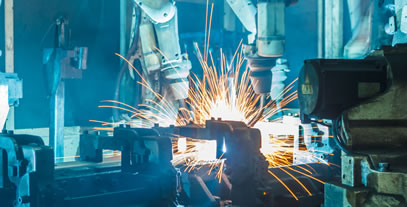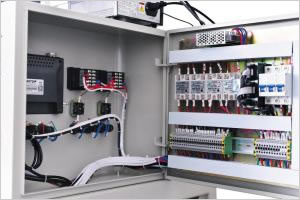 IIoT and the rise of industrial automation have changed the business landscape, leading machine builders to aggressively look for new ways to improve. In fact, the entire machine building supply chain has been forced to reinvent and renovate traditional design perspectives and methods. For years, machine builders, OEMs, systems integrators, and their distributors have relied on manufacturers, like Belden, to provide them with the products to succeed - from connecting their smart factories to securing their networks.
IIoT and the rise of industrial automation have changed the business landscape, leading machine builders to aggressively look for new ways to improve. In fact, the entire machine building supply chain has been forced to reinvent and renovate traditional design perspectives and methods. For years, machine builders, OEMs, systems integrators, and their distributors have relied on manufacturers, like Belden, to provide them with the products to succeed - from connecting their smart factories to securing their networks.
But, as relationships between machine builders and the manufacturers they support continue to grow, so too grows the need for machine builders to generate new designs to meet the growing need of customers to be competitive. Which is rightly so, as the pressure is always on to stay ahead of the competition.
And as the needs of machine builders and distributors adapt, so too must the providers of products and technology to meet and exceed these needs.
|
|
Priorities Shaping Automation Market Trends: Space Saving
As one of the many industrial cable suppliers for machine builders, it's our job to keep a sharp eye on market trends changing within industrial automation and to listen closely to the needs of end users. One of the most popular trends we consistently discuss is the effort to increase factory efficiency by reducing the overall footprint of facilities, also known as miniaturization. These efficiencies are achieved by primarily focusing on one thing - the overall size of the machines being used.
The need for smaller machines has been driven by several factors:
- Demand for Precision: Machines are becoming smaller to carry out more precise functions. Reducing their size increases the accuracy and efficiency in which they can carry out these new, precise functions.
- Demand for More Machines: If machines are smaller, you can fit more machines into less space and ultimately increase manufacturing output without expanding your facility.
However, there is one important factor we've missed thus far. As machine builders scale down the size of machines, consideration must be given to the size of everything that plugs into these machines. This makes advances in smaller, more-flexible cable the foundation of this industry trend towards saving (or better utilizing) shop floor space.
|
 Bigger Isn't Always Better: Benefits of Smaller Cabling
Bigger Isn't Always Better: Benefits of Smaller Cabling
I'm guessing you're already onboard with the benefits of shrinking machine size in your facilities. But the benefits of using smaller cables to connect these machines might be less apparent.
To help make smaller machines a reality, the rest of the networking and communications components will have to shrink in size too. Here are some of the benefits you'll find in today's smaller, more efficient industrial cables:
- Connect More Devices in Less Space: You can now purchase industrial cabling that has up to a 31 percent smaller diameter than previous options. Not only can more devices be connected using less space, but there's more physical room available to perform maintenance.
- Tighter Bend Radius: Smaller, more flexible cabling simplifies installation by making the cable routing and feeding easier. Often cable installations are hindered by the limited amount of space available to install them. With smaller, more manageable cable design, technicians can design more precise installations.
- Higher Industrial Ratings: While space-saving cables may be small, they're still mighty. For example, when designing Belden's SpaceMaker line of cables, we ensured they could withstand exposure to chemicals, wash-down environments and temperature, among other challenging operating conditions.
|
|
3 Future Trends in Industrial Cabling
It's easy to see how smaller cabling has critical implications for the introduction of smaller machines into automation settings, but the benefits of this smaller, space-saving cabling extends far beyond this one application.
Here are three areas you can expect to be impacted by smaller cabling in the near future:
- New Industries: Not just machine builders stand to benefit from reduced cable sizing. The future of smaller cable will bring the same reduced size and increased flexibility improvements to Cat 5e, Cat 6 and Cat 6A Ethernet cables, creating exciting new possibilities for transformation in industries like oil and gas.
- New Cable Types: In the beginning, this new cabling technology was applied to the cables that connect machines to a power source. Moving forward, more flexible cable looks to also improve the performance of Ethernet cables. Expect to see upgrades in everyday Cat 5, Cat 6 and even Cat 6A cables.
- Power Over Ethernet: Power over Ethernet (PoE) is a technology that sends electrical power simultaneously with Ethernet data along a single Ethernet copper cable. PoE technology started in the IT world for equipment such as Voice over IP (VoIP) phones, IP cameras or printers. Offering cost savings, flexibility and increased safety and reliability, PoE is now experiencing a growing presence in industrial markets, making it a likely standard for future installations.
View All Belden SpaceMaker Cables >>
View More from Belden >>
|
|
|


